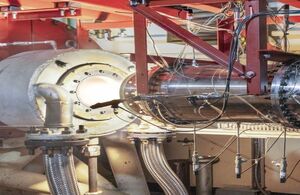
Britain has successfully tested of a new engine for hypersonic missiles in a crucial step forward for the UK’s defence capabilities in light of Vladimir Putin’s war in Ukraine.
The critical research could see weapons propelled at several thousand miles an hour, a development described by defence minister John Healey as a “milestone moment” for the UK.
Research supported by the US Air Force and Nasa has produced an engine which demonstrated the capacity for high-speed air-breathing, meaning it can use oxygen in the air to propel itself rather than onboard oxygen storage.
This allows a greater range on the missile than a conventional rocket alongside the increased speed.
The testing was carried out as part of the Ministry of Defence’s UK’s Hypersonic Weapons Programme, which hopes to support delivery of a hypersonic weapon technology demonstrator by 2030.
A total of 233 static tests were carried out over six weeks at Nasa’s Langley Research Centre in Virginia, USA, by a team of researchers led by the Defence Science and Technology Laboratory (Dstl) and the US Air Force Research Laboratory (AFRL).

Multiple designs were tested across varying speeds from supersonic to hypersonic speeds, to ensure the robustness of the design, the ministry said.
Mr Healey said: “We are living in a more dangerous world and it has never been more important for us to innovate and stay ahead of our adversaries, equipping our forces with the technologies of the future.

“This milestone moment on hypersonics research, supported by British scientists and British small businesses, demonstrates another crucial area where we are working in lockstep with the United States to bolster our Armed Forces and strengthen our deterrence.”
Paul Hollinshead, chief executive of Dstl, hailed the “milestone” achievement.
He said it marks a “critical advancement in the UK’s defence capabilities” which “reinforces our standing in the AUKUS hypersonic weapon development collaboration” - referring to the trilateral security arrangement between Australia, the UK and the US.
“The success of these tests highlights the UK’s commitment to technological leadership and innovation in this crucial area,” Mr Hollinshead added.







